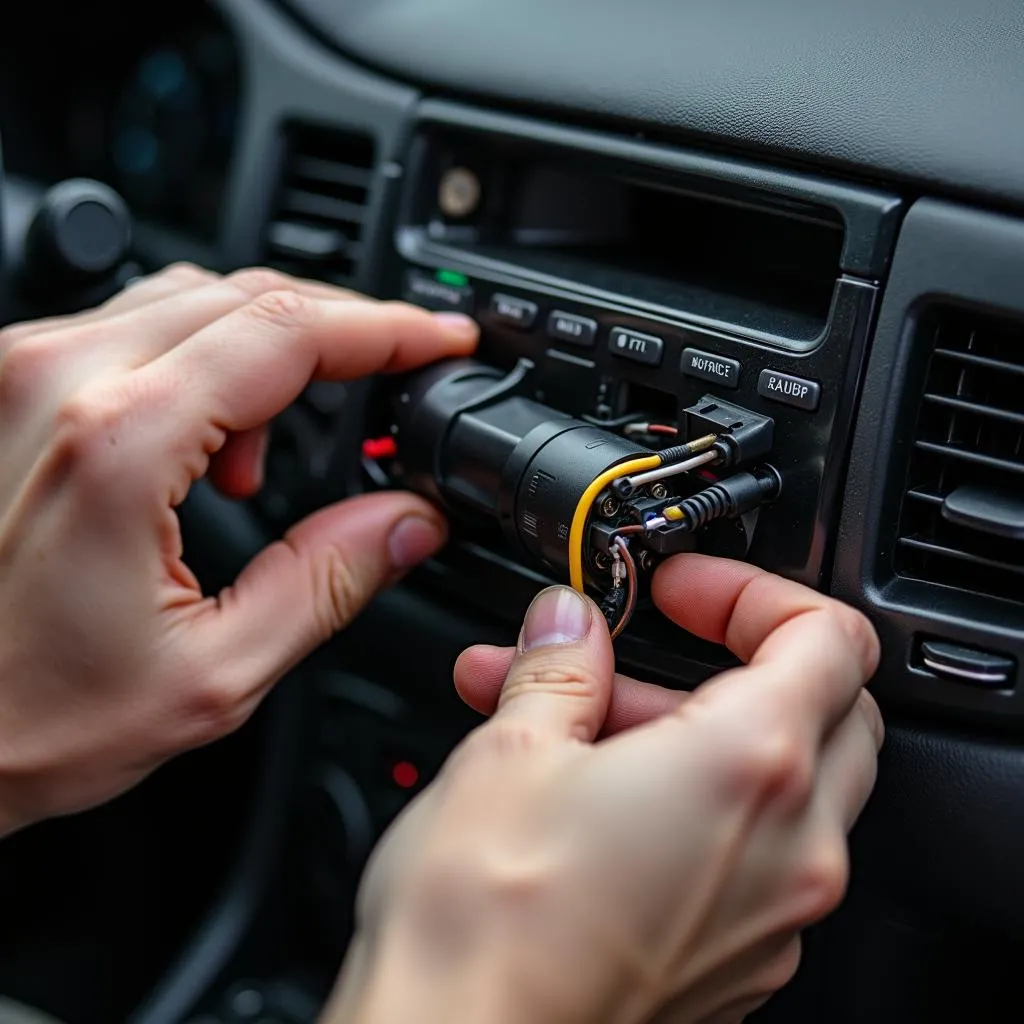The brake fluid warning light on your MK5 Golf is a crucial safety indicator that should never be ignored. This light illuminates on your dashboard when the system detects an issue with your braking system, potentially compromising your ability to slow down or stop effectively. Understanding why this light appears and how to address it can save you from dangerous situations on the road.
Common Causes of the Brake Fluid Warning Light
There are several reasons why your MK5 Golf’s brake fluid warning light might turn on:
- Low Brake Fluid Level: This is the most common culprit. Brake fluid levels can drop due to leaks in the brake lines, calipers, or master cylinder. As brake pads wear down, the fluid level naturally decreases. However, a sudden drop usually signals a leak.
- W Worn Brake Pads: While not directly related to brake fluid, worn brake pads can trigger the warning light. This is because the brake caliper pistons need to extend further to compensate for the worn pads, leading to a lower fluid level in the reservoir.
- Faulty Brake Fluid Level Sensor: The sensor in the brake fluid reservoir might malfunction, sending a false signal to the dashboard even if the fluid level is adequate.
- Issues with the ABS System: Problems within the Anti-lock Braking System (ABS), such as a faulty ABS module or sensor, can also trigger the brake fluid warning light.
Diagnosing the Problem
If your MK5 Golf’s brake fluid warning light comes on, it’s essential to diagnose the issue promptly:
- Check the Brake Fluid Level: Park your car on a level surface and visually inspect the brake fluid reservoir. It’s typically located near the firewall on the driver’s side. The reservoir has minimum and maximum level markings. If the fluid level is below the minimum, you’ll need to add more.
- Inspect for Leaks: Carefully examine the area around the master cylinder, brake lines, and calipers for any signs of fluid leaks. Look for wet spots, drips, or a noticeable decrease in fluid level over time.
- Check Your Brake Pads: Inspect the thickness of your brake pads through the spaces between the wheel spokes. If you notice the pads are significantly thin or worn down to the metal backing plate, they need replacement.
What to Do When the Light Comes On
- Pull Over Safely: If the brake fluid warning light illuminates while driving, pull over to a safe location immediately. Driving with low brake fluid is extremely dangerous and could lead to brake failure.
- Do Not Continue Driving: If you suspect a leak or the brake fluid level is critically low, do not attempt to drive your car. Instead, call for roadside assistance or have your vehicle towed to a trusted mechanic.
- Seek Professional Help: Unless you are confident in your mechanical skills, it’s best to have a qualified mechanic diagnose and repair the problem. They can identify the root cause, whether it’s a leak, faulty sensor, or an issue with the ABS system.
Remote Diagnostic and Programming Solutions
In today’s technologically advanced world, remote diagnostic and programming solutions are increasingly common in the automotive industry. These services, offered by specialized companies, allow technicians to access your vehicle’s onboard computer system remotely to diagnose issues and even install software updates or reprogramming.
Here’s how it works:
- You connect a specific diagnostic device to your car’s OBD-II port.
- The device communicates with the technician’s software via a secure internet connection.
- The technician can then run diagnostics, read error codes, and even perform software updates or programming adjustments as needed.
These remote solutions can be beneficial for certain brake-related issues, such as:
- Diagnosing faulty sensors or modules within the braking system.
- Reprogramming the ABS module after a repair or component replacement.
- Identifying intermittent issues that are difficult to replicate in a traditional shop environment.
However, it’s essential to remember that remote diagnostics and programming have limitations. Physical repairs, such as fixing leaks or replacing components, still require hands-on work by a qualified mechanic.
Conclusion
The brake fluid warning light in your MK5 Golf is a crucial safety indicator that should never be ignored. Addressing the underlying issue promptly is essential for your safety and the well-being of your vehicle. By understanding the common causes, taking immediate action when the light comes on, and seeking professional help when needed, you can ensure your MK5 Golf remains safe and reliable on the road.

